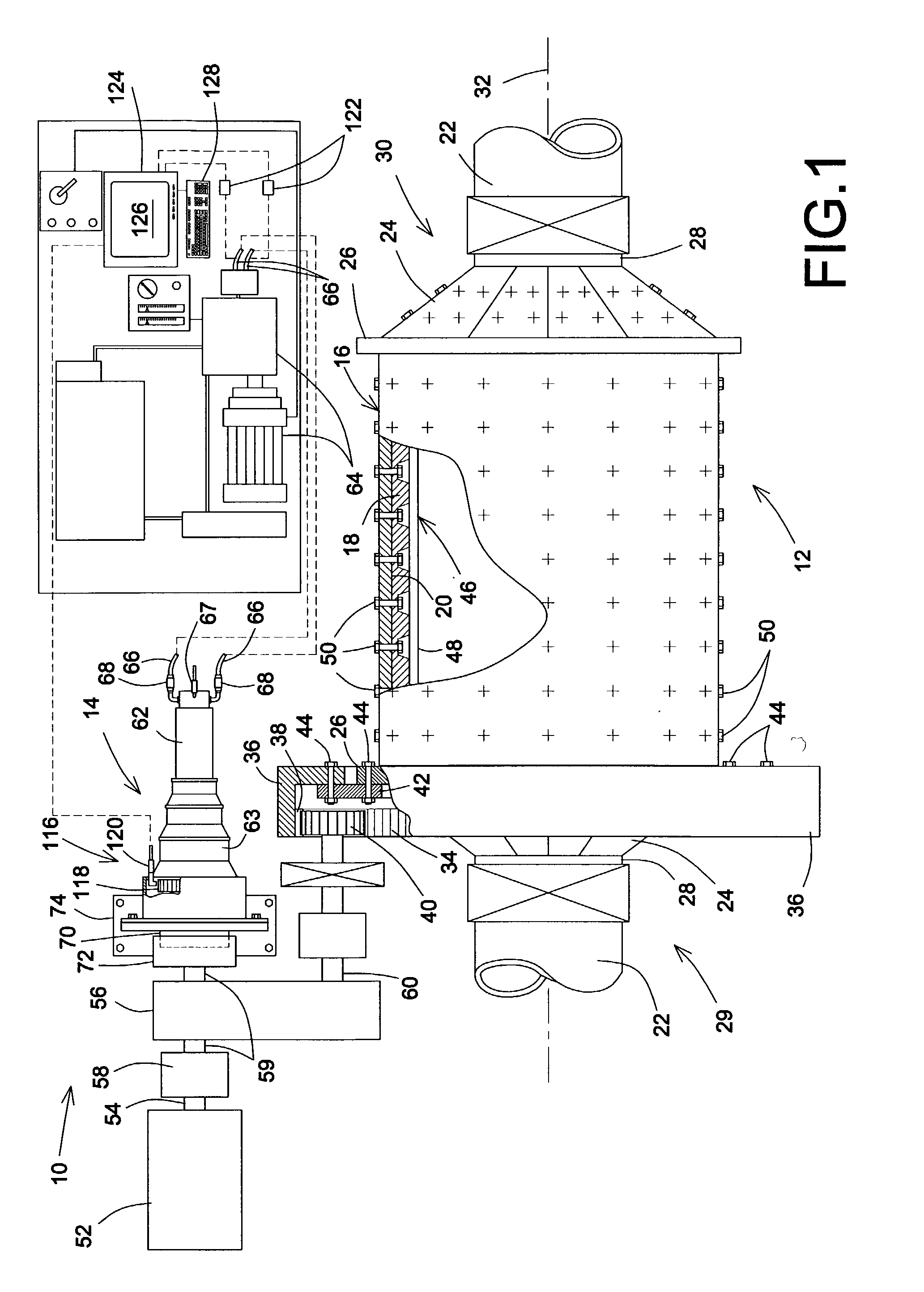Angle-based method and device for protecting a rotating component
a protection device and rotating component technology, applied in maintenance and safety accessories, food science, applications, etc., can solve problems such as damage, wear on the inside of grinding mills, and damage to rotating components. the effect of damage prevention
- Summary
- Abstract
- Description
- Claims
- Application Information
AI Technical Summary
Benefits of technology
Problems solved by technology
Method used
Image
Examples
Embodiment Construction
[0078]With reference to the annexed drawings a preferred embodiments of the present invention will be herein described for indicative purpose and by no means as of limitation.
[0079]Referring to FIG. 1, there is shown a protection device generally indicated by reference numeral 10 in accordance with an embodiment of the present invention. The protection device 10 is shown being used with a conventional grinding mill 12 and a conventional hydraulic inching device 14. It should be understood that this type of installation merely represents one type of exemplary installation through which the concepts of the subject invention may be intended to be used and will allow those skilled in the art to more readily appreciate the general gist of the application for the proposed protection device. The protection device 10 may be used in other environments in conjunction with other types of machinery without departing from the overall intent or scope of the present invention.
[0080]The grinding mi...
PUM
 Login to View More
Login to View More Abstract
Description
Claims
Application Information
 Login to View More
Login to View More - R&D
- Intellectual Property
- Life Sciences
- Materials
- Tech Scout
- Unparalleled Data Quality
- Higher Quality Content
- 60% Fewer Hallucinations
Browse by: Latest US Patents, China's latest patents, Technical Efficacy Thesaurus, Application Domain, Technology Topic, Popular Technical Reports.
© 2025 PatSnap. All rights reserved.Legal|Privacy policy|Modern Slavery Act Transparency Statement|Sitemap|About US| Contact US: help@patsnap.com



